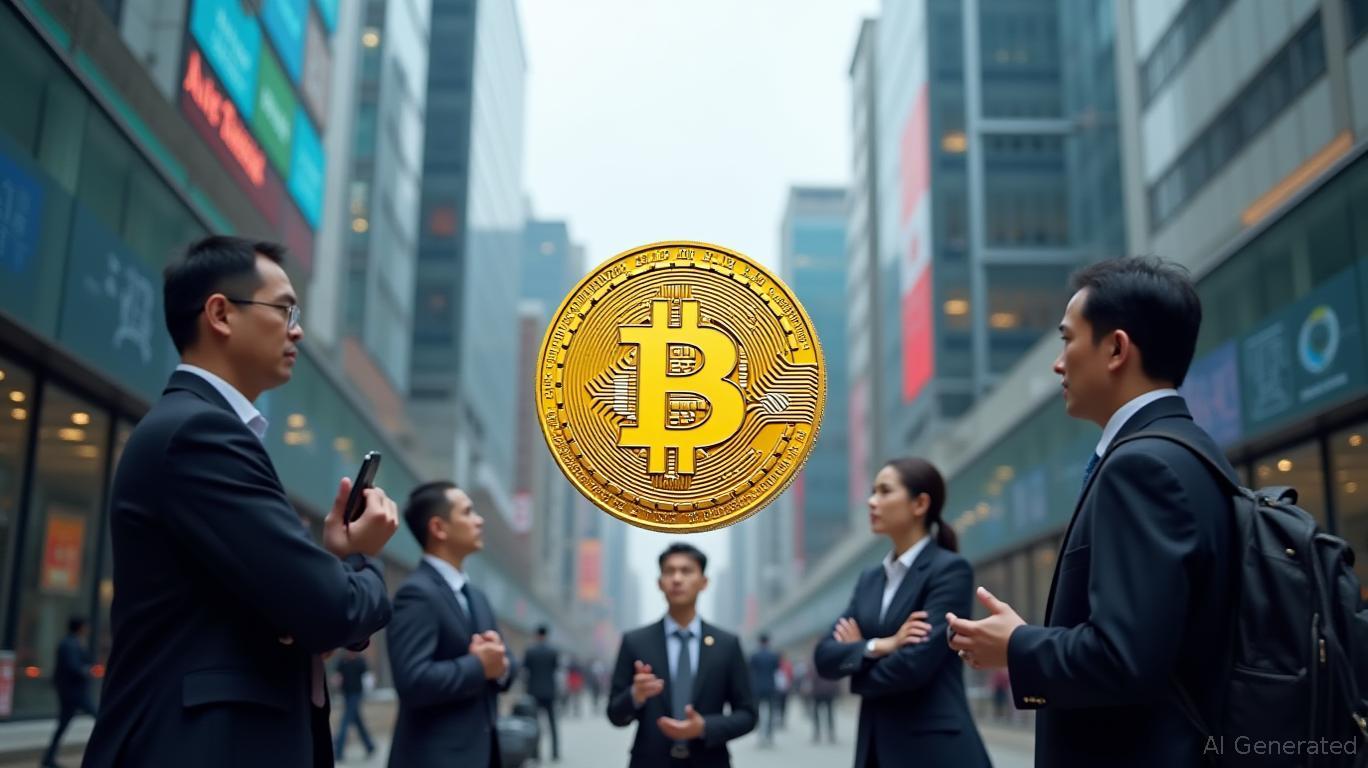Hong Kong's Stablecoin Regulations Balance Innovation and Investor Protection
- Hong Kong mandates stablecoin issuance by SFC-licensed providers to strengthen investor protection and market stability. - Regulators reject DAT structure conversions for listed firms, warning against inflated valuations exceeding crypto holdings' value. - The framework aligns with global trends but contrasts with U.S. permissiveness, balancing innovation against mainland China's stricter crypto controls. - Stablecoin transaction volumes hit $4.65T in late 2025, yet regulators stress education to mitigat
Hong Kong has rolled out a fresh regulatory system for stablecoins, representing a major move in its bid to become a leading global center for digital assets. The new rules, detailed in the "Stablecoin Regulations," stipulate that only "recognized providers"—those holding a Type 1 license from the Hong Kong Securities and Futures Commission (SFC)—are permitted to issue designated stablecoins. This rule is already being enforced, with companies such as New Margin Technology Holdings Limited, a publicly traded firm in Hong Kong, engaging in over-the-counter (OTC) stablecoin transactions like
Authorities have also increased scrutiny of listed firms aiming to implement Digital Asset Treasury (DAT) models, where companies use cash reserves to acquire cryptocurrencies. The Hong Kong Stock Exchange has turned down proposals from at least five businesses seeking to transition into DAT entities, as reported by a

This updated framework is in line with Hong Kong’s wider fintech goals. The Hong Kong Monetary Authority (HKMA) has revealed plans to build a comprehensive digital currency system, aiming to support the coexistence of tokenized deposits, digital Hong Kong dollars, and regulated stablecoins, as outlined in a
Stablecoin market activity has seen strong momentum, with transaction volumes reaching $4.65 trillion in the week ending October 30, 2025, according to Panewslab. This growth is fueled by institutional involvement, such as JPMorgan Chase’s tokenization of private equity funds and Circle’s introduction of the Arc blockchain public testnet. Despite this, regulators remain cautious, stressing the importance of investor education to reduce risks linked to volatile or poorly understood digital assets.
Hong Kong’s regulatory stance stands in contrast to more lenient markets like the United States, where DAT models have become more common. While the SFC recognizes the potential advantages of crypto treasury strategies, it maintains strict oversight for any company wishing to list as a DAT. This approach is influenced by broader geopolitical factors, as Beijing has increased regulation of mainland companies’ digital asset ventures, including suspending stablecoin initiatives at firms like Ant Group and JD.com, as noted by Cryptopolitan. Hong Kong’s regulatory path therefore seeks to encourage innovation while staying aligned with mainland policy expectations.
As Hong Kong finalizes its digital currency strategy, industry participants are watching closely to see how the SFC and HKMA will address existing regulatory gaps. For now, the focus remains on licensed issuers and investor protection, with the SFC cautioning that a lack of clear regulations could create unforeseen risks for market stability, as reported by CoinEdition. The next few months will be crucial in determining whether Hong Kong can attract crypto-focused companies while upholding its reputation as a well-regulated financial hub.
Disclaimer: The content of this article solely reflects the author's opinion and does not represent the platform in any capacity. This article is not intended to serve as a reference for making investment decisions.
You may also like
Ethereum Updates Today: Is Anxiety Fueling Investments or Just Misjudgment? The Unpredictable Nature of Crypto Challenges Investor Resolve
- Cryptocurrency markets faced sharp declines in November 2025 as Bitcoin and Ethereum led a $400M liquidation wave amid Fed policy uncertainty and token unlocks. - Bitcoin dominance rose to 60.15% as investors fled altcoins, while $312M in token unlocks from projects like Ethena and Solana amplified short-term volatility. - Institutional players like Bitmine Immersion (holding 3.4M ETH) and emerging projects like Mutuum Finance highlight crypto's evolving infrastructure and investment dynamics. - Regulato

Stellar News Today: Chainlink’s Cross-Chain Integration Fuels Institutional DeFi Expansion
- Chainlink's LINK token rebounded 3.6% amid a 78% volume spike, showing institutional accumulation despite U.S. trading weakness. - Stellar integrated Chainlink's CCIP and Data Feeds to expand DeFi capabilities, processing $5.4B in real-world asset volume quarterly. - TON's adoption of Chainlink tools enables cross-chain token transfers across 60+ blockchains, enhancing DeFi infrastructure scalability. - Chainlink's $11.5B market cap and strategic partnerships reinforce its role as a critical cross-chain

Ethereum Updates: Balancer's $116 Million Breach Exposes DeFi Security Vulnerabilities
- DeFi protocol Balancer suffered a $116M exploit via v2 pool vulnerabilities, draining assets across Ethereum, Arbitrum, and other chains. - Attackers exploited infinite approval flaws in wstETH and other tokens, rapidly transferring stolen funds to new wallets, raising laundering concerns. - Balancer confirmed the breach, advised users to avoid affected pools, while TVL dropped to $678M and BAL token fell over 5%. - Forked projects like Beets Finance also lost $3.5M, with security firms attributing risks

XRP News Today: Ripple’s RLUSD: Accelerating Relief Efforts and Strengthening International Financial Systems
- Ripple's RLUSD stablecoin partners with humanitarian groups to enable fast, transparent cross-border aid via blockchain, bypassing traditional banking systems. - RLUSD's market cap surged to $900M as institutions adopt its regulatory-friendly tools, with Ripple acquiring Hidden Road to expand institutional finance integration. - Tembo e-LV and UBRI's $1.5M education investment highlight RLUSD's emerging market adoption, while Brazil/Mexico use Ripple tech to modernize remittances and combat inflation. -
